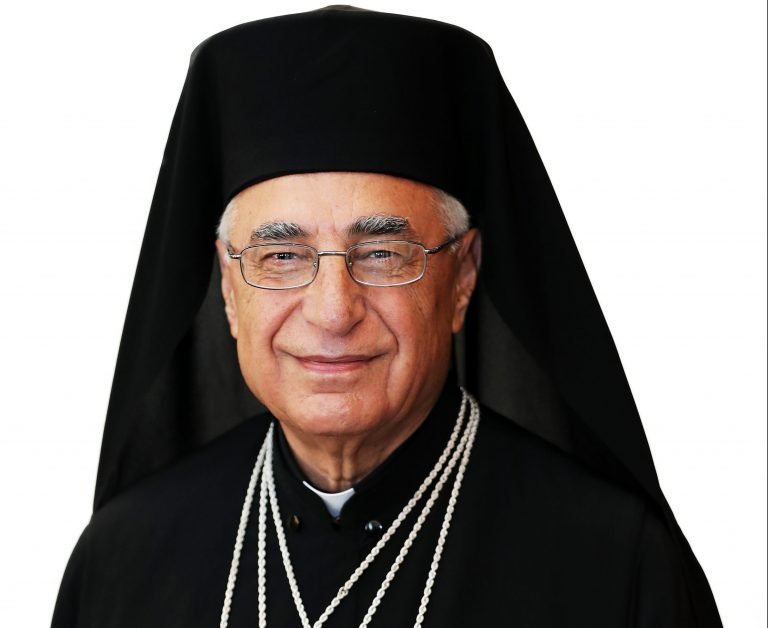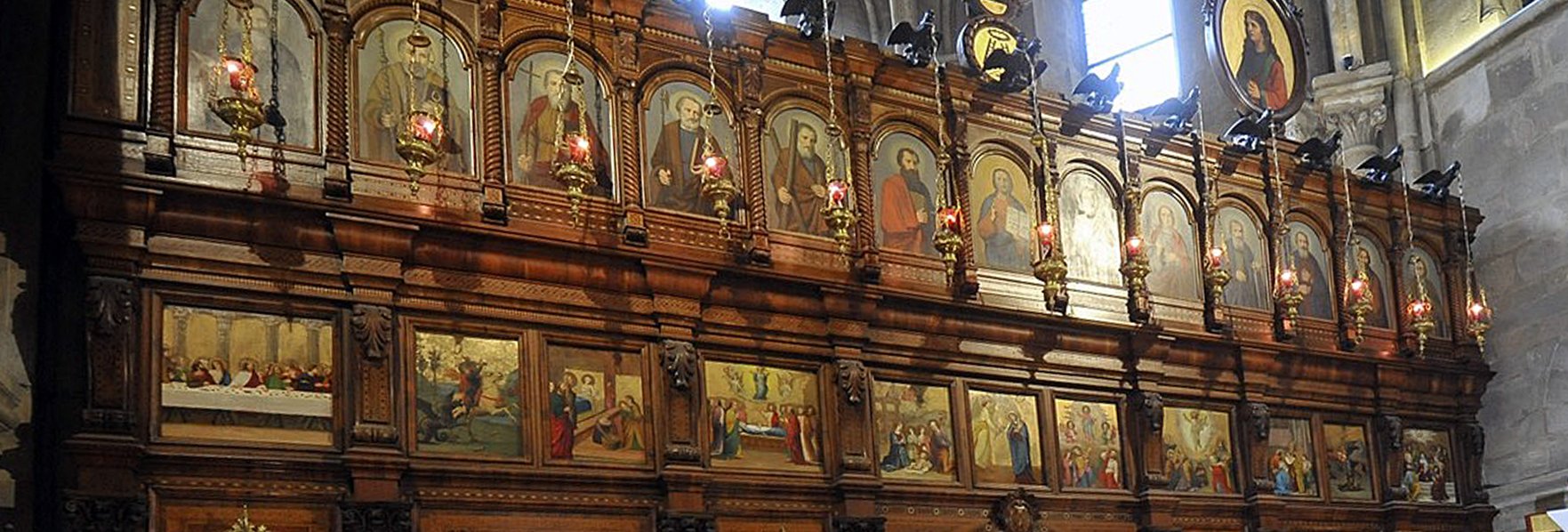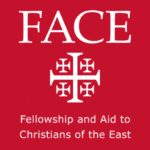Melkite Greek Catholic Church

Nature: The Melkite Greek Catholic Church is an Eastern Catholic church in full communion with the Bishop of Rome.
Origin: Branched from the Church of Antioch in 1724 and reunited with the Pope at the election of a Patriarch recognized by Rome.
Rite: Byzantine
Language: Arabic, Greek (in the diaspora: French, English, Portuguese, Spanish)
Location: Egypt, Palestine, Israel, Jordan, Lebanon, Syria, Turkey, Iraq, Sudan, South Sudan
(Diaspora: Argentina, Australia, Brazil, Canada, France, Mexico, New Zealand, Sweden, UK, USA, Venezuela)
Head: His Beatitude Patriarch Youssef Absi, SMSP (born 1946; elected 2017)
Title: Melkite Greek Patriarch of Antioch
Residence: Damascus, Syria
Membership: approx. 1.5 million worldwide
History of the Melkite Greek Catholic Church
The Melkite Greek Catholic Church is part of the oldest continuous Christian community in the world, Antioch, recognised as an early apostolic centre of the Christian faith founded by Peter and Paul. The setting up of the patriarchates of Alexandria, Antioch and Jerusalem – the first two at the Council of Nicaea (325 A.D.) and the third at Chalcedon (451 A.D.) – gave it form and made it a territorial and juridical entity. In the 5th century the Emperor of Constantinople, Marcian (450-457), enforced the decrees of the Council of Chalcedon as imperial law. Those who followed the lead of the Byzantine emperor, accepting the decrees of the Council, were called ‘Melkites’ or ‘King’s Men’.
Following the conquest of the Middle East by the Muslims in the 7th century, and through to the establishment of the Ottoman Empire in the 15th century, during which period a greatly diminished Byzantine Empire continued to govern from Constantinople, the Melkite Church maintained close ties with both the Patriarch of Constantinople and the Bishop of Rome. This identity gave them a particular spirituality, thought and tradition, Byzantine in essence, but distinct because of their Arabic links, in particular their connections with early Islam; they were effectively a community alive and active within a ‘post’ Christian culture.
Some of the Melkite hierarchs were more disposed to Constantinople, others favoured the authority of Rome, an identity we can call ‘the church in the middle’.
Roman-Melkite union in 1724
In 1724 the Catholics elected Seraphim Tanas, (Cyril VI Tanas) to head the Antiochian Church. The Orthodox appointed a Cypriot monk from Mount Athos, Sylvester, as patriarch. This marks the beginning of the two Greek patriarchates of Antioch – the Catholic and the Orthodox – which still exists. This division has continuous effects: the existence of two distinct ecclesial communities sharing the traditions, spiritual, liturgical and theological of Antioch.
Later history
Since 1724, Melkite Catholics have worked steadily to be a ‘voice for the East within the Western Church’.
Gregorios II, worked for union of the Churches, striving to maintain Eastern traditions. His was a significant voice during Vatican I, and an important influence on Pope Leo XIII’s Orientalium Dignitatis.
Maximos IV, spoke on behalf of the ‘absent brother’, the great Orthodox Church during Vatican II, making a significant contribution to the role and renewal of the Catholic Eastern Churches and helping certain liturgical shifts in the Latin Rite.
Greek-Catholic Melkites are a small but vibrant voice within the Catholic Church, calling upon the dignity of the Orthodox faith and praying for the unity of the Church of Christ.
They share much in common with Syrian Catholics, Maronites and Orthodox, but with their sister church, the Antiochian Orthodox, they identify more with the Byzantine spiritual tradition of Antioch. Their recovery of Eastern identity is a process particularly on the level of the structure and ecumenism, so as to fulfil their witness to the possibility of an authentic Eastern Church living in communion with the Church of Rome.

His Beatitude Patriarch Youssef Absi, SMSP
Melkite Greek Patriarch of Antioch
Patriarch of the Melkite Greek Catholic Church
On Wednesday 21 June 2017, the Holy Synod of the Melkite Greek Catholic Church elected Archbishop Joseph Absi as the Church’s new patriarch. He received ecclesiastical communion from Pope Francis the following day. Patriarch Joseph, aged 71, succeeded Patriarch Gregory III Laham, who retired 6 May at the age of 83.
Born in Damascus in 1946, he was ordained a priest of the Missionary Society of St Paul in 1973 taking Lebanese citizenship. In 1999 he became superior general of the society, two years later was appointed curial bishop of the Melkite Patriarchate of Antioch. In 2007, he was appointed the Patriarchal Vicar of the Melkite Archdiocese of Damascus. He holds licentiates in philosophy and theology, a doctorate in musical sciences and Byzantine hymnography from the University of Kaslik in Lebanon. He has taught philosophy, Greek, and musicology at the university level.
Pope Francis wrote to Patriarch Joseph the day after his election:
The election of Your Beatitude comes at the time of a delicate situation for the venerable Greek-Melkite Church and when many Christian communities in the Middle East are called to bear witness in a special way to their faith in the dead and risen Christ…In this particularly difficult time, pastors are called upon to manifest communion, unity, closeness, solidarity, and transparency before the suffering people of God. (Greetings 22 June 2017)

Melkite Greek Catholic Church in the UK
The Melkite Clergy form part of the Oriental Catholic Chaplaincy in the United Kingdom. The parish in the United Kingdom shares a church with the Anglican parish of St Barnabas, Pimlico.
Saint John Chrysostom Parish
c/o St. Barnabas Church
St. Barnabas Street
London SW1W 8PF
Parish Priest: Archimandrite Dr Shafiq Abouzayd
Tel: 01865-514041 / Mobile 07977-495150.
Email: melkitelondon@gmail.com
https://www.melkite.uk/
Patriarchal Priest: Canon Dr Robert Gibbons
(with responsibility for the ecumenical activities of the Church in the UK and representation on ecclesisatical bodies)
Tel: 07760252690
Email: robertgibbons376@btinternet.com
Retired Deacon: Father Deacon Richard Downer
Worldwide demographic statistics
In the Middle East:
Patriarchal Metropolitan Archeparchy of Damascus, Syria: (150,000, in 2010) 3,000
Metropolitan Archeparchy of Aleppo, Syria: 18,000
Metropolitan Archeparchy of Bosra, Syria (27,000 in 2010): 12,000
Metropolitan Archeparchy of Homs, Syria (25,000 in 2010): 70,000
Archeparchy of Lattaquié, Syria 15,000
Metropolitan Archeparchy of Beirut and Gibail, Lebanon: 200,000
Metropolitan Archeparchy of Tyre, Lebanon (8,700 in 2010): 2,857
Archeparchy of Baalbek, Lebanon: 27,000
Archeparchy of Baniyas, Lebanon: 2,575
Archeparchy of Saida, Lebanon (7,000 in 1990): 44,000
Archeparchy of Tripoli in Lebanon: 10,000
Archeparchy of Zahleh and Furzol, Lebanon: 150,000
Archeparchy of Petra and Philadelphia, Jordan: 30,000
Archeparchy of Akka, Israel: 70,000
Jerusalem (patriarchal dependency): 3,300
Outside the Patriarchal Territories
Eparchy of Nossa Senhora do Paraiso em Sao Paulo, Brazil: 446,600
Eparchy of Newton, USA: 23,342
Eparchy of Saint-Sauveur de Montréal, Canada: 36,193
Eparchy of Nuestra Senora del Paraiso en Mexico: 4,746
Patriarchal Exarchate of Iraq: 200
Egypt, Sudan and South Sudan (patriarchal dependency): 6,200
Patriarchal Exarchate of Kuwait: 4,500
Eparchy of Saint Michael’s of Sydney, Australia and NZ: 54,526
Apostolic Exarchate in Venezuela (Caracas estab. 1990): 28,000
Apostolic Exarchate in Argentina (Cordoba estab. 2002:) 310,700
Total throughout the world: approx. 1.6 million
Parishes in Europe have been omitted; the London parish for instance has over 500 members.
